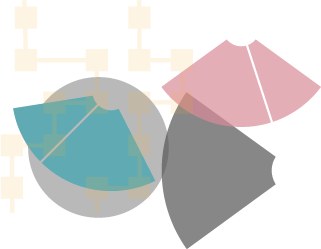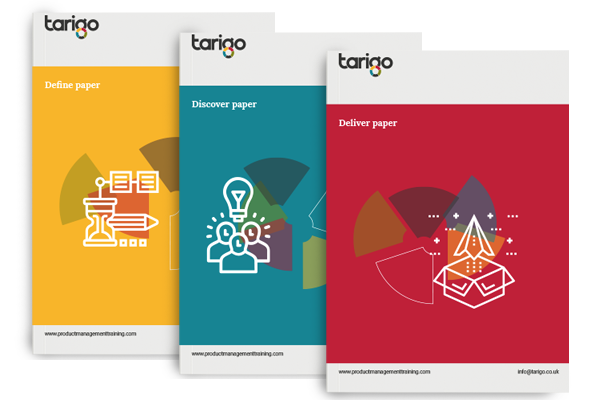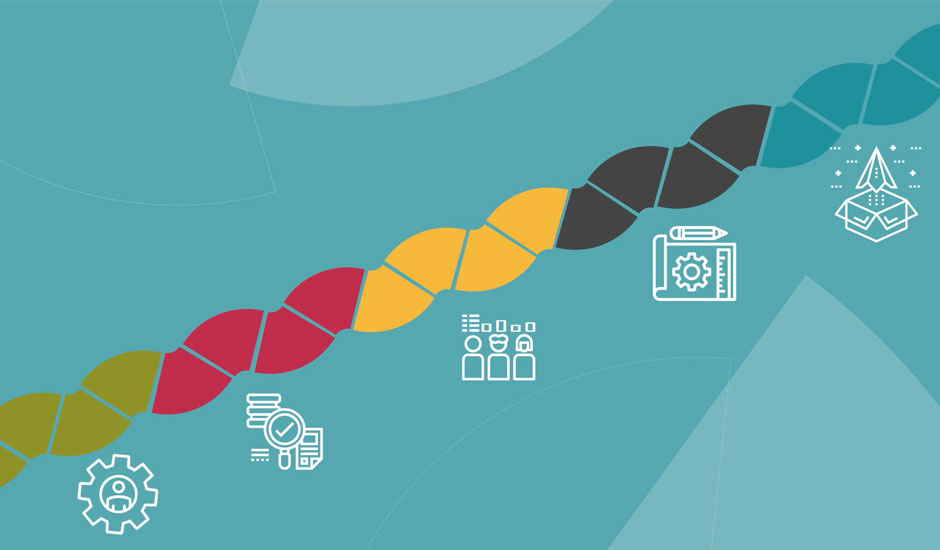Blogs > Product Management Training
Building an Empathy Map for personas in order to better understand your customer
By Kane Avery - Head of Training

A “Persona” is a fictional representation of an actual user and is applied in the early stages of product development or product redesign. Personas are vital to the success of a product because they drive design decisions by taking common user needs and bringing them to the forefront of planning before design has actually started. Personas provide the team with a shared understanding of users in terms of goals and capabilities.
- Personas help us to understand our customers and to develop
empathy with them.
- Personas are used for designing solutions and for messaging.
- Personas must be validated.
Why use personas?
The goal of a persona is to represent the observed mindsets and behaviours of a target customer group to help us understand them better.
We can’t develop a relationship with every single one of our customers, but we still need a way of understanding them. Grouping together customers with similar problems, needs, wants or desires helps us define them.
Now we know who they are, we can use
proto-personas to help us develop empathy:
- What are their needs?
- What do they think, feel and do?
- What are their pain points and how can we make it better?
How do we create these personas?
Proto-personas can be created very quickly, once we’ve established a few things:
- Firstly, which product are we working on? And, which market segment are we referring to?
- Then, who are our personas in this segment?
- And finally, which persona are we
focusing on and what problem are we trying to solve?
In a business-to-business environment there are multiple buyers and user personas and, also, we mustn’t forget the end user. We need to identify the entire persona value chain to design and sell our solutions in the most effective way.
In a business-to-consumer environment, we have fewer personas, but we can still use this tool.
The important thing is that we put ourselves in their shoes and stay focused on their point of view.
The Empathy Map
Once we’ve identified which persona to focus on, we can use an empathy map to create our proto-persona.
Let’s have a look at one and how to use it.
In this example, the product is our corporate card, the segment is a large corporate and our buyer persona is the operations buyer, in this case the expense manager.
Let’s start by describing our expense manager. We know that they are equally likely to be male or female, they are likely to be well-educated and they are likely to be over 40. Let’s call her “Mary”.
Let’s start with Mary’s Wants and Needs.
In order to help us connect to our empathy and understand the situation that Mary is in, we must then understand and consider how these 'Wants & Needs' make Mary feel and what she is thinking as a result.
Think & Feel
Mary will have some emotional responses toward the Goals she must achieve in the Wants & Need section. This may be coupled with thoughts that expand on her feelings and hence we separate them whilst being grouped together. It's clear in this example that Mary has strong feelings towards her targets and is in need of some help to to achieve success that is beneficial for all of her team.

Do - Active response and actions
The Do section of the empathy map is designed to validate the magnitude of any pain whilst also giving us a better understanding of what this particular persona/customer does and is involved with in their day-2-day life. This allows us to identify work arounds, gauge the priority of the pain described and understand their everyday life, whether that be working or otherwise, in order to be able to make the most well informed decisions about our products later on when it comes to innovation and ideation!
Pain Points
From all of this hard working in interviewing and talking to our customer to write this empathy map we should land on the conclusion, which is where the Pain Points section comes into play. from all of our discussions we should be able to identify clear pain points that describe problems and points of friction for our customers, without jumping to solutions. Even going as far as asking customers what their pain points are in order for us to triangulate the qualitative data we have captured and see things all point in the same direction.
For Mary, in our example, the pain points are fairly clear and should we be in a position to help Mary with a potential solution then we have clear data that can guide us and inform the decision making process so that any possible solutions in the future address this pain and create a more friction free experience in order to deliver value.

Solution
Now that we understand Mary’s needs and pain points, we can design an effective solution and craft sales messages to show her how our product meets her needs.
For example:
Corporate card
spend is automatically associated with expense codes to reduce time spent
looking them up and to minimise errors. Card spend, and expense claims, are
automatically reconciled, reducing errors and saving time.
Staff members photograph receipts and associate them with the expense via an app. The system will not allow expenses to be submitted without an associated receipt. The system also forces a workflow sign-off process via line managers.
This means that
expenses are completed correctly and authorized by the time they reach Mary’s
team.
Other large corporates similar to the one Mary works in typically save 20% administration time and cost on expenses once they have a fully integrated this expense system.
Mary is very happy!
Cross Check
You will need to go out and meet real Mary's and validate your assumptions with actual customers. You can check with the real Marys that the features and benefits of your product meet Mary’s needs and overcome her problems. If they do, you have a strong product for Mary’s persona. If they don’t, you will have input for further refining your persona and product solution.
Try to schedule a one-hour meeting with 3 to 5 of you colleagues to build a proto-persona
Prior to the meeting define which product and market segment, then select a persona in this segment and complete the proto-persona template.
The Benefits of Persona Development
If you don’t think Personas are worth the trouble, think again. Benefits include:
- Personas give stakeholders an opportunity to discuss critical
features of a redesign: This is especially helpful when you have multiple
stakeholders with different ideas about what needs to be developed first. Using
Personas to walk stakeholders through common interactions unveils frustrations
and pain-points that will help clarify actual user priorities over the
stakeholder’s personal wish list.
- They help team members share a consistent
understanding of the user group: Personas take data and make the stories more
compelling and fun, thus making them easier to remember and consider when the
team is working towards a solution – together.
- Personas help designers develop informed wireframes and site architecture: Since Personas focus on the needs of
the users, the team can walk through scenarios and determine optimal placement
of content to specifically support the goal of the product. This is vital to
the success of a website or application and will save your client thousands of
dollars and/or man-hours reworking a product after it’s launched (and
“officially” tested by actual users).
- Personas provide a “face” to the user story, creating more empathy and understanding about the person using the product: This prevents designers and developers from applying their own mental models to the product design which may not align with actual user needs.

Product Management Bootcamp and Pro-Series
Our Bootcamp training is the most complete course for product management, taking you from ideation through to delivery and iterative improvements.
About Tarigo
We enable product managers to drive success.Established in 2003, Tarigo has built an enviable reputation for delivering high-quality training and consultancy solutions to product managers throughout Europe and the USA.
Our fresh approach to product management training has proven incredibly successful and our capability to adapt to clients’ training and consultancy needs has only helped to further this success.




